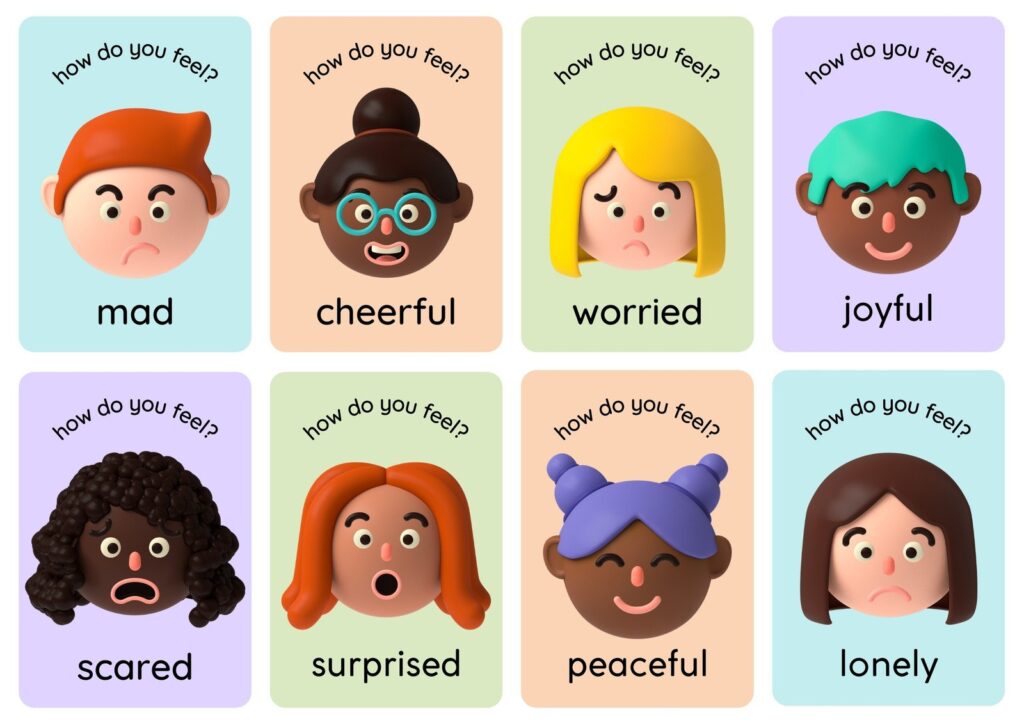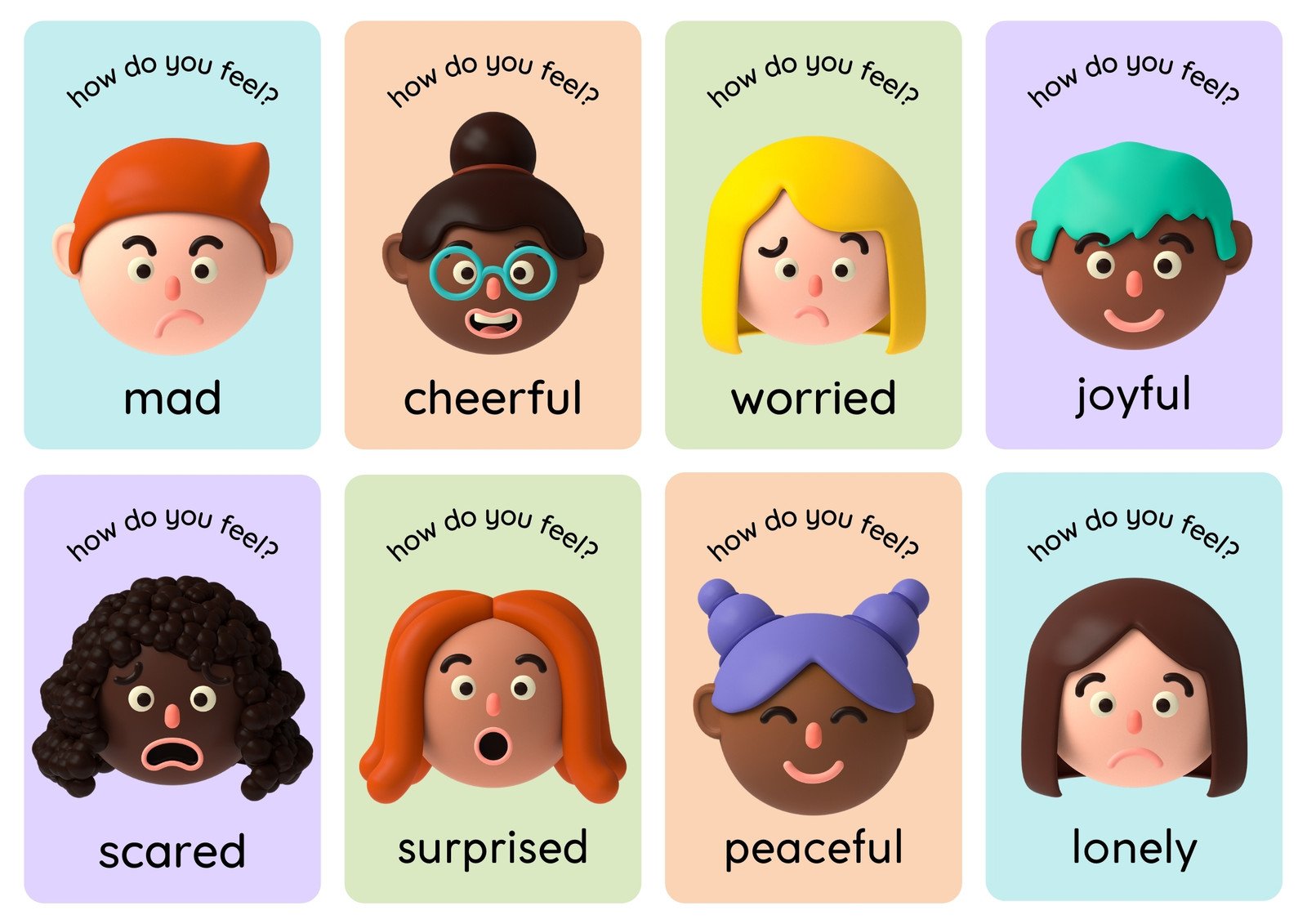
Understanding Their Emotions: A Guide to Empathy and Connection
Navigating the complexities of human interaction often hinges on our ability to understand their emotions. Recognizing and responding appropriately to the feelings of others is crucial for building strong relationships, fostering effective communication, and creating a more empathetic world. This article explores the multifaceted nature of emotions, providing insights and practical strategies to enhance your emotional intelligence and deepen your connections with those around you.
The Importance of Emotional Awareness
Emotional awareness is the cornerstone of understanding their emotions. It involves recognizing and acknowledging your own feelings before you can accurately interpret the emotional states of others. Self-awareness allows you to approach interactions with greater clarity and objectivity, minimizing the risk of projecting your own feelings onto others.
Without a solid understanding of your own emotional landscape, it becomes challenging to differentiate between your feelings and those of the people around you. This can lead to misinterpretations, misunderstandings, and ultimately, strained relationships. Cultivating emotional awareness requires introspection, mindfulness, and a willingness to confront uncomfortable feelings.
Developing Self-Awareness
- Practice Mindfulness: Engage in daily mindfulness exercises to become more attuned to your internal state.
- Journaling: Regularly write down your thoughts and feelings to gain a deeper understanding of your emotional patterns.
- Seek Feedback: Ask trusted friends or family members for honest feedback on how your emotions manifest in your interactions.
Decoding Nonverbal Cues
A significant portion of human communication is nonverbal. Understanding their emotions often requires paying close attention to body language, facial expressions, and tone of voice. These nonverbal cues can provide valuable insights into how someone is feeling, even if they are not explicitly expressing it verbally.
Facial expressions, such as a furrowed brow or a slight smile, can indicate a range of emotions, from confusion and frustration to happiness and contentment. Body language, including posture and gestures, can also reveal underlying feelings. For example, crossed arms might suggest defensiveness, while open posture can signal openness and receptivity.
Interpreting Facial Expressions
While facial expressions can be a reliable indicator of emotions, it’s essential to consider the context and cultural background. Some facial expressions may have different meanings in different cultures. Additionally, individuals may consciously or unconsciously mask their true feelings, making it crucial to look for subtle cues and inconsistencies.
Understanding Body Language
Body language can provide valuable insights into their emotions. Pay attention to posture, gestures, and eye contact. A person who is feeling anxious may fidget or avoid eye contact, while someone who is confident may maintain steady eye contact and stand tall.
Active Listening and Empathy
Active listening is a crucial skill for understanding their emotions. It involves paying close attention to what someone is saying, both verbally and nonverbally, and demonstrating that you are genuinely interested in their perspective. Empathy, the ability to understand and share the feelings of another, is closely intertwined with active listening.
When you actively listen, you create a safe and supportive space for the other person to express their feelings openly and honestly. This allows you to gain a deeper understanding of their emotional state and respond with empathy and compassion. [See also: The Art of Empathetic Communication]
Practicing Active Listening
- Pay Attention: Give the speaker your undivided attention, minimizing distractions.
- Show That You Are Listening: Use verbal and nonverbal cues to indicate that you are engaged, such as nodding and making eye contact.
- Provide Feedback: Summarize or paraphrase what the speaker has said to ensure that you understand their message.
- Defer Judgment: Avoid interrupting or offering unsolicited advice.
- Respond Appropriately: Offer support and validation, acknowledging their feelings without dismissing them.
The Role of Emotional Regulation
Emotional regulation is the ability to manage and control your own emotions in a healthy and constructive way. This is essential for understanding their emotions, as it allows you to respond to others with greater composure and empathy. When you are able to regulate your own emotions, you are less likely to react impulsively or project your feelings onto others.
Emotional regulation is not about suppressing or denying your feelings. Rather, it is about developing the skills to manage your emotions in a way that is both healthy and effective. This involves recognizing your triggers, developing coping strategies, and practicing self-care.
Strategies for Emotional Regulation
- Identify Your Triggers: Recognize the situations, people, or events that tend to trigger strong emotional reactions.
- Develop Coping Strategies: Identify healthy ways to manage your emotions, such as exercise, meditation, or spending time in nature.
- Practice Self-Care: Prioritize activities that promote your physical and emotional well-being.
The Impact of Culture and Context
Understanding their emotions requires considering the influence of culture and context. Cultural norms and expectations can significantly impact how people express and interpret emotions. What is considered appropriate in one culture may be considered inappropriate in another.
Similarly, the context of a situation can also influence emotional expression. For example, someone may express sadness differently in a private setting than they would in a public setting. It’s essential to be aware of these cultural and contextual factors when interpreting their emotions.
Cultural Sensitivity
To effectively understand their emotions across different cultures, it’s important to be culturally sensitive. This involves learning about different cultural norms and expectations, and being mindful of your own biases and assumptions. [See also: Cross-Cultural Communication Strategies]
Contextual Awareness
Pay attention to the context of a situation when interpreting their emotions. Consider the environment, the relationship between the individuals involved, and any recent events that may have influenced their emotional state.
The Benefits of Understanding Their Emotions
The ability to understand their emotions offers numerous benefits, both personally and professionally. It can lead to stronger relationships, improved communication, increased empathy, and a more positive and supportive environment.
In personal relationships, understanding their emotions can help you build deeper connections with your loved ones. It allows you to provide support and understanding during difficult times and celebrate their successes with genuine enthusiasm. In professional settings, understanding their emotions can improve teamwork, enhance leadership skills, and foster a more collaborative and productive work environment.
Building Stronger Relationships
Understanding their emotions is essential for building strong and lasting relationships. It allows you to connect with others on a deeper level, fostering trust and intimacy.
Improving Communication
When you understand their emotions, you can communicate more effectively. You can tailor your message to their emotional state, ensuring that it is received with understanding and empathy.
Increasing Empathy
Understanding their emotions naturally leads to increased empathy. You become more attuned to the feelings of others, allowing you to offer support and compassion.
Conclusion
Understanding their emotions is a vital skill for navigating the complexities of human interaction. By developing emotional awareness, decoding nonverbal cues, practicing active listening, and considering the influence of culture and context, you can enhance your emotional intelligence and deepen your connections with those around you. Cultivating empathy and understanding is a continuous journey, but the rewards are immeasurable, leading to stronger relationships, improved communication, and a more compassionate world. The ability to truly understand their emotions is a gift that enriches both your life and the lives of those you touch. Remember to always approach interactions with an open mind and a willingness to learn, and you will be well on your way to mastering the art of emotional connection. Understanding their emotions ultimately leads to a more harmonious and fulfilling existence for everyone involved. By consistently striving to understand their emotions, we contribute to a more empathetic and understanding society. The journey of understanding their emotions is one that requires continuous learning and self-reflection. By dedicating ourselves to this pursuit, we can create a world where emotions are understood, validated, and respected. Ultimately, understanding their emotions is the key to unlocking deeper connections and building a more compassionate future. The power of understanding their emotions should never be underestimated.

